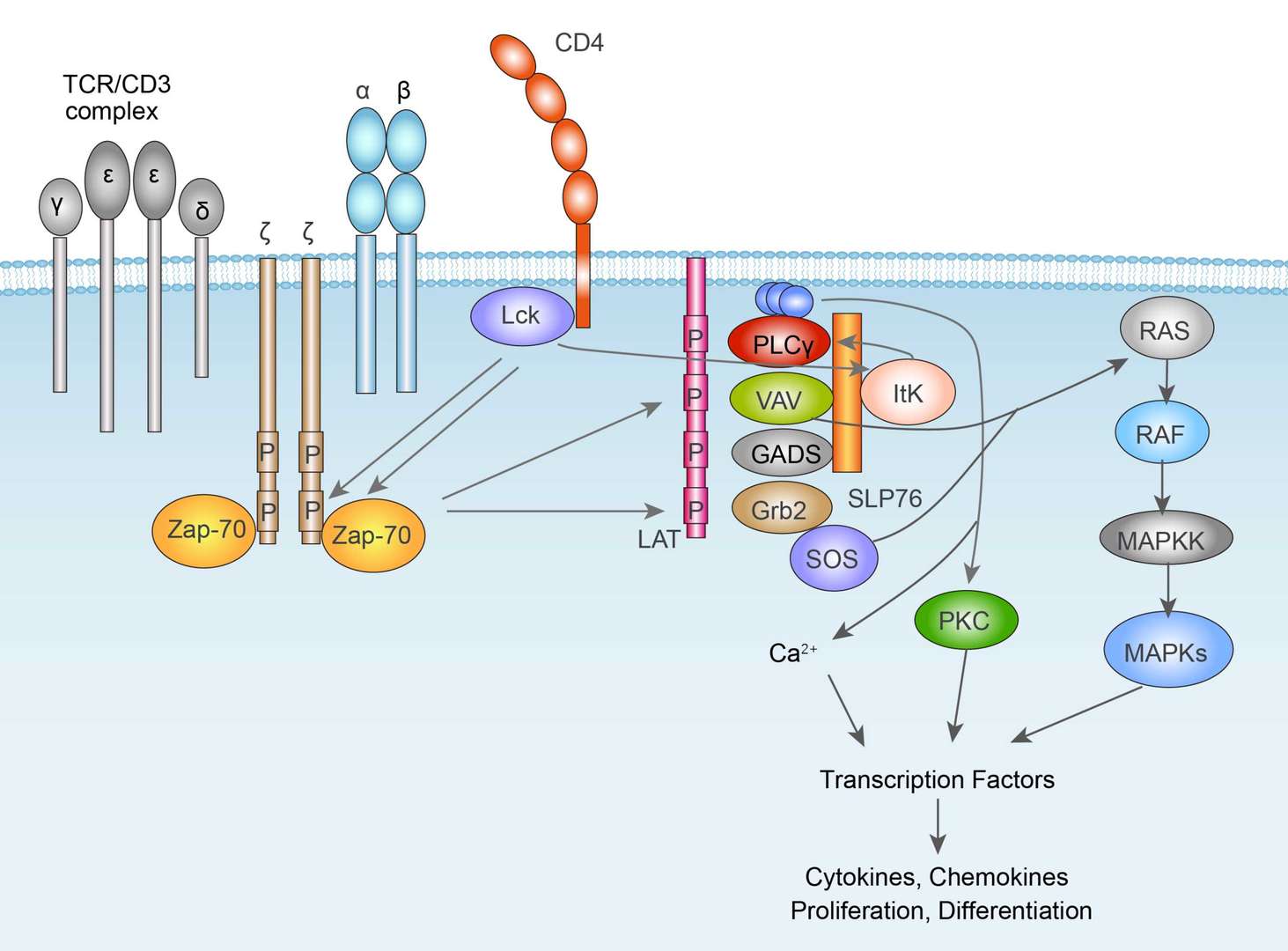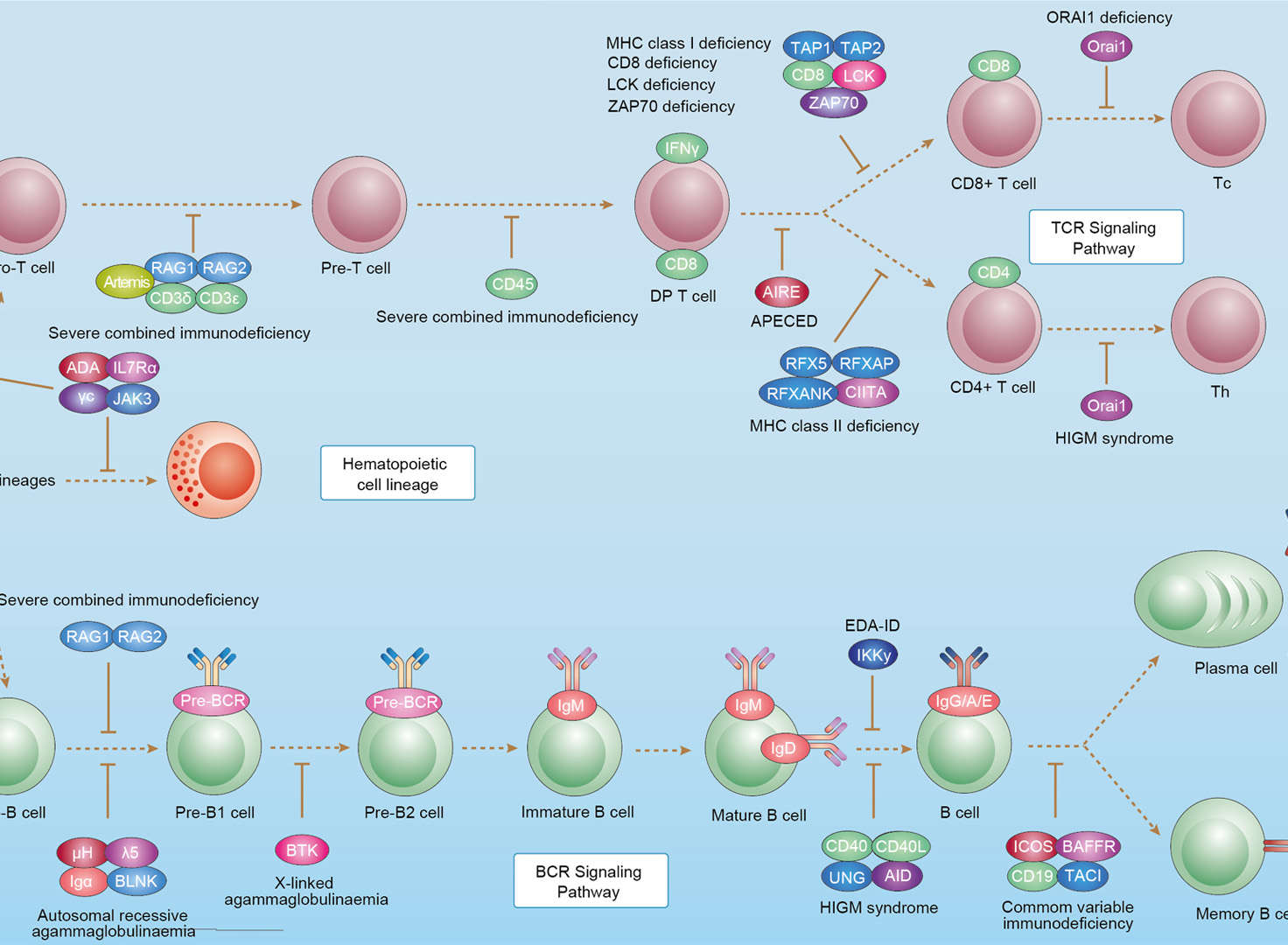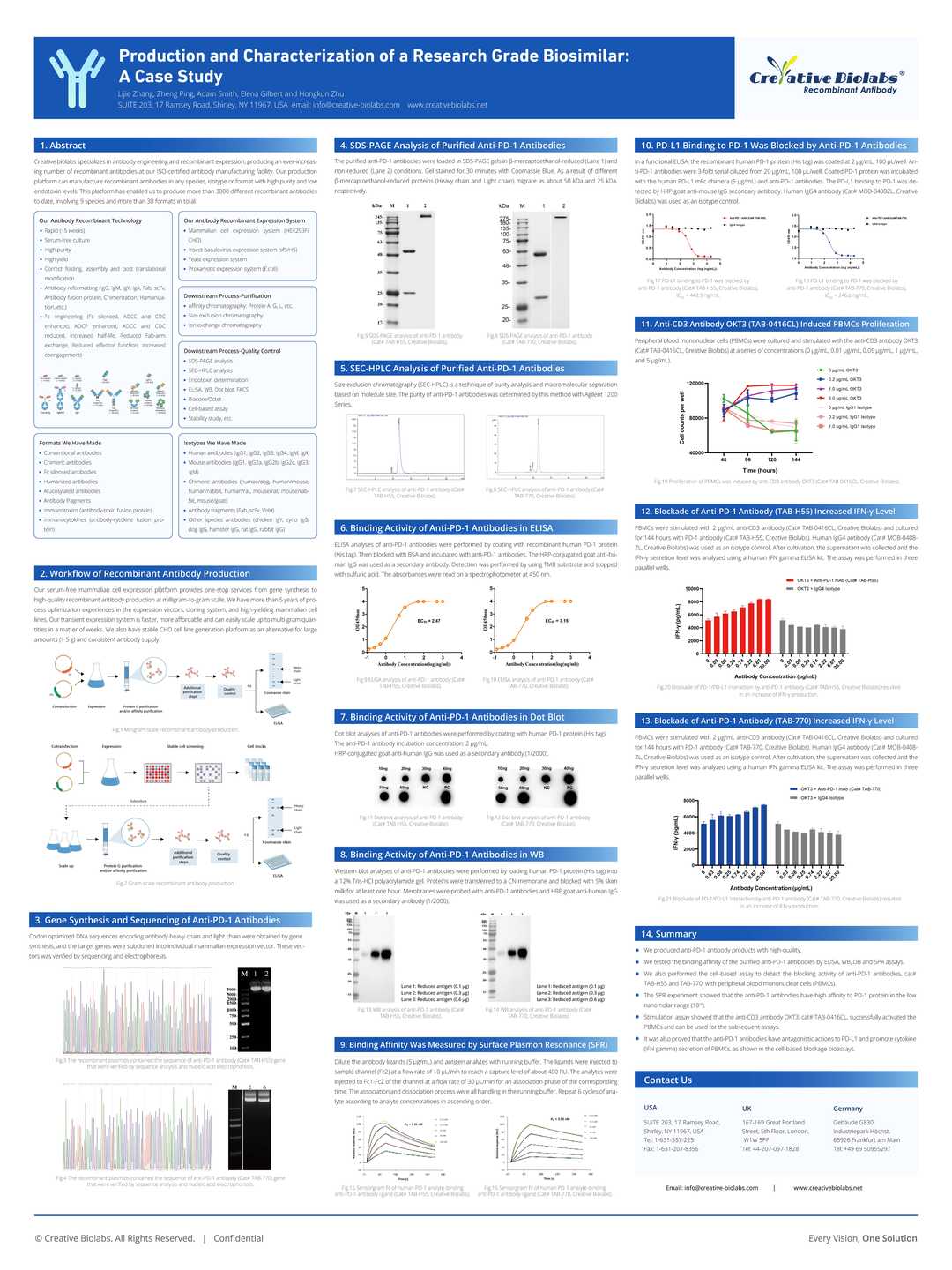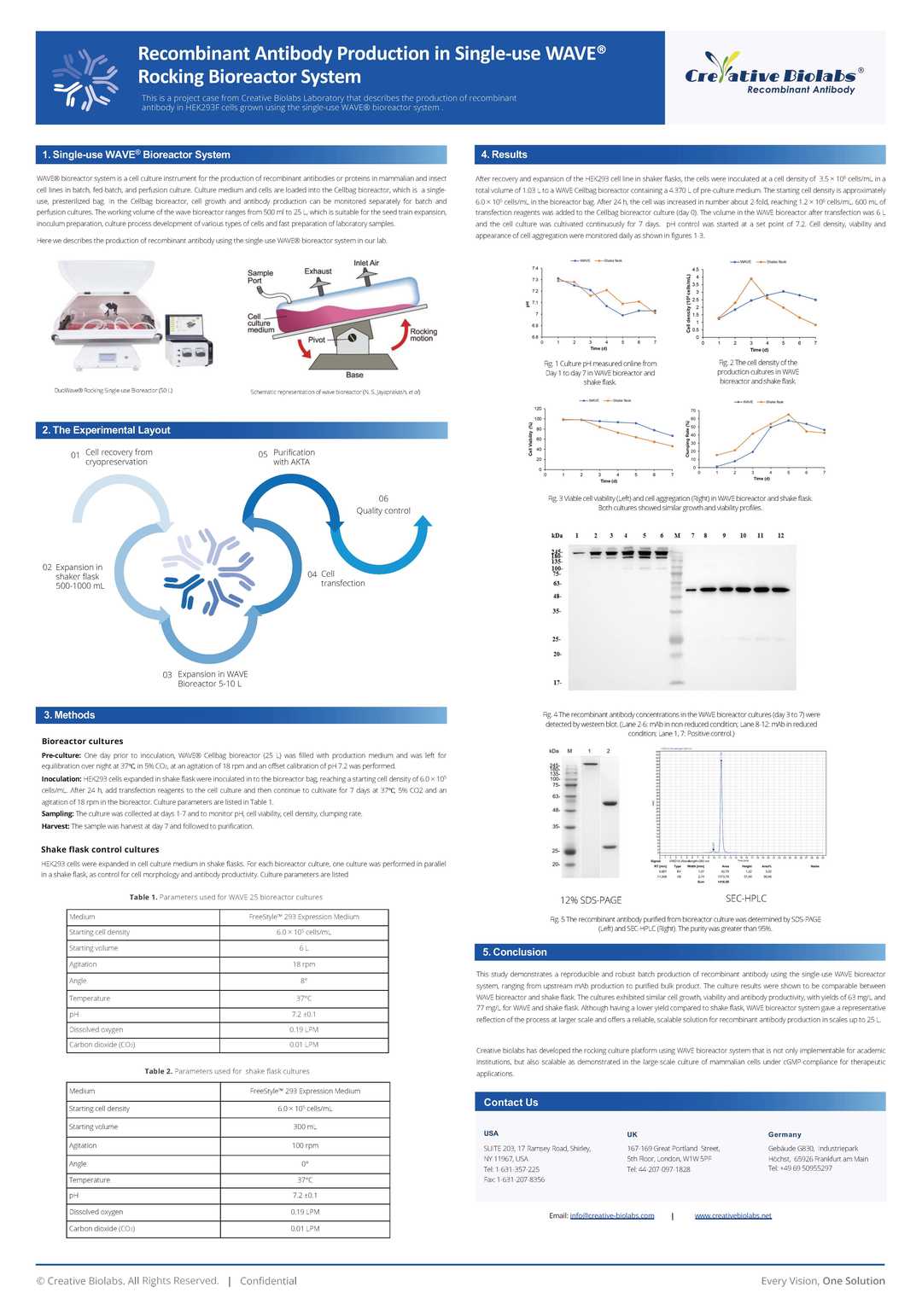Mouse Anti-LCK Recombinant Antibody (VS3-CJ434)
CAT#: VS3-CJ434
This product is a mouse antibody that recognizes human LCK.




Specifications
- Immunogen
- Recombinant protein
- Host Species
- Mouse
- Type
- Mouse IgG
- Specificity
- Human LCK
- Species Reactivity
- Human
- Applications
- WB, ICC, IHC, FC
- Conjugate
- Unconjugated
Product Property
- Purification
- Affinity purified
- Purity
- >95% as determined by SDS-PAGE
- Format
- Liquid
- Buffer
- PBS
- Preservative
- 0.09% Sodium Azide
- Storage
- Store at 4°C for short term. Aliquot and store at -20°C for long term. Avoid repeated freeze/thaw cycles.
Applications
- Application Notes
- This antibody has been tested for use in Western Blot (1:2000), Immunocytochemistry (1:25), Immunohistochemistry (1:25), Flow Cytometry (1:25).
Target
- Alternative Names
- LSK; YT16; IMD22; p56lck; pp58lck
- Gene ID
- 3932
- UniProt ID
- P06239
- Sequence Similarities
- Belongs to the protein kinase superfamily. Tyr protein kinase family. SRC subfamily.
- Cellular Localization
- Cell membrane, Cytoplasm, Membrane
- Post Translation Modifications
- Autophosphorylated on Tyr-394, increasing enzymatic activity, this site is dephosphorylated by PTN22. Phosphorylated on Tyr-505 by CSK, decreasing activity. Dephosphorylated by PTPRC/CD45. Dephosphorylation at Tyr-394 by PTPN2 negatively regulates T-cell receptor signaling.
Myristoylation is required prior to palmitoylation.
Palmitoylation regulates association with the plasma membrane and could be mediated by ZDHHC2.
- Protein Refseq
- NP_001036236.1; NP_005347.3
- Function
- Non-receptor tyrosine-protein kinase that plays an essential role in the selection and maturation of developing T-cells in the thymus and in the function of mature T-cells. Plays a key role in T-cell antigen receptor (TCR)-linked signal transduction pathways. Constitutively associated with the cytoplasmic portions of the CD4 and CD8 surface receptors. Association of the TCR with a peptide antigen-bound MHC complex facilitates the interaction of CD4 and CD8 with MHC class II and class I molecules, respectively, thereby recruiting the associated LCK protein to the vicinity of the TCR/CD3 complex. LCK then phosphorylates tyrosine residues within the immunoreceptor tyrosine-based activation motifs (ITAM) of the cytoplasmic tails of the TCR-gamma chains and CD3 subunits, initiating the TCR/CD3 signaling pathway. Once stimulated, the TCR recruits the tyrosine kinase ZAP70, that becomes phosphorylated and activated by LCK. Following this, a large number of signaling molecules are recruited, ultimately leading to lymphokine production. LCK also contributes to signaling by other receptor molecules. Associates directly with the cytoplasmic tail of CD2, which leads to hyperphosphorylation and activation of LCK. Also plays a role in the IL2 receptor-linked signaling pathway that controls the T-cell proliferative response. Binding of IL2 to its receptor results in increased activity of LCK. Is expressed at all stages of thymocyte development and is required for the regulation of maturation events that are governed by both pre-TCR and mature alpha beta TCR. Phosphorylates other substrates including RUNX3, PTK2B/PYK2, the microtubule-associated protein MAPT, RHOH or TYROBP. Interacts with FYB2 (PubMed:27335501).
Customer Review
There are currently no Customer reviews or questions for VS3-CJ434. Click the button above to contact us or submit your feedback about this product.
Submit Your Publication
Published with our product? Submit your paper and receive a 10% discount on your next order! Share your research to earn exclusive rewards.
Related Signaling Pathways
Related Diseases
Downloadable Resources
Download resources about recombinant antibody development and antibody engineering to boost your research.
Product Notes
This is a product of Creative Biolabs' Hi-Affi™ recombinant antibody portfolio, which has several benefits including:
• Increased sensitivity
• Confirmed specificity
• High repeatability
• Excellent batch-to-batch consistency
• Sustainable supply
• Animal-free production
See more details about Hi-Affi™ recombinant antibody benefits.
Datasheet
MSDS
COA
Certificate of Analysis LookupTo download a Certificate of Analysis, please enter a lot number in the search box below. Note: Certificate of Analysis not available for kit components.
Protocol & Troubleshooting
We have outlined the assay protocols, covering reagents, solutions, procedures, and troubleshooting tips for common issues in order to better assist clients in conducting experiments with our products. View the full list of Protocol & Troubleshooting.
Isotype Control
- CAT
- Product Name
Secondary Antibody
- CAT
- Product Name
Recommended Dilution Buffer
- CAT
- Product Name
See other products for "LCK"
Select a product category from the dropdown menu below to view related products.
| CAT | Product Name | Application | Type |
|---|---|---|---|
| MOB-1482z | Mouse Anti-LCK Recombinant Antibody (clone 25C4) | WB, FC, ICC, IHC, IP | Mouse IgG1 |
| MOB-1072CT | Recombinant Mouse anti-Human LCK Monoclonal antibody (9F6G0) | ELISA, WB | |
| ZG-011R | Mouse Anti-LCK Recombinant Antibody (ZG-011R) | WB, ELISA | Mouse IgG |
| ZG-012R | Mouse Anti-LCK Recombinant Antibody (ZG-012R) | WB | Mouse IgG |
| VS3-QX666 | Mouse Anti-LCK Recombinant Antibody (clone 845CT3.5.2) | WB | Mouse IgG1 |
| CAT | Product Name | Application | Type |
|---|---|---|---|
| MOR-2023 | Hi-Affi™ Recombinant Rabbit Anti-LCK Monoclonal Antibody (DS2023AB) | FC, ICC, IHC-P, IP, WB | IgG |
| CAT | Product Name | Application | Type |
|---|---|---|---|
| VS-0525-XY3959 | Anti-LCK Immunohistochemistry Kit | IHC |
Popular Products

Application: ELISA, IP, FC, FuncS, Neut, IF, WB

Application: WB, FuncS, IF, Neut, ELISA, FC, IP

Application: IF, IP, Neut, FuncS, ELISA, FC, WB

Application: WB, FuncS, IF, Neut, ELISA, FC, IP

Application: FC, IP, ELISA, Neut, FuncS, IF, ICC

Application: Neut, FC, IHC-Fr, IP, BA

Application: ELISA, IHC, FC, IP, IF, FuncS

Application: ELISA, Block, WB, FC, IP
For research use only. Not intended for any clinical use. No products from Creative Biolabs may be resold, modified for resale or used to manufacture commercial products without prior written approval from Creative Biolabs.
This site is protected by reCAPTCHA and the Google Privacy Policy and Terms of Service apply.







 TCR Signaling Pathway
TCR Signaling Pathway
 Primary Immunodeficiency
Primary Immunodeficiency
















